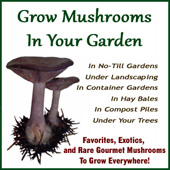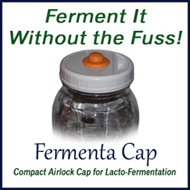Turkeys
Black Turkey
The American version of the Black Turkey was originally selectively bred for calm temperament, rapid growth, and early maturation. It has been close to extinction, and is in need of recovery under the care of breeders who will strive to retain good utility characteristics, and to recover the original traits for which it was bred.
This turkey has a reputation for excellent meat, which has created some interest in revival of the breed. It has the potential to be a terrific asset to the home farm or small commercial farm where free-range turkeys are an asset.
Blacks have also lost much of their foraging instinct, which can be sharpened by natural feeding protocols beginning as soon as possible when young.
- Type - meat
- Size - medium to large, depending on bloodlines
- Production Capacity - varies depending on bloodlines, but producers of tasty meat
- Special Features - feathers have an iridescent sheen
- Best for Farms - great for Preservation breeders, and for small farms that are willing to improve the breed
- Eggs, Milk, Meat Features - limited cream to brown eggs, good quality meat
- Other Products - some market for feathers
- Historic or Contemporary Significance - An older Heritage breed worthy of preservation for its value to the small farm
- Housing and Space Requirement - typical for turkey
- Regional Adaptations - adaptable to a range of conditions, but requires shade in the summer
- Feed Requirement - typical, but utility traits will be enhanced with good forage or fodder feed.
- Other Considerations - Blacks are rare and difficult to locate, and characteristics depend upon bloodlines. Breeders should be willing to cull for major defects (including health issues) in the first generation, lack of productivity or lack of vigor in the second generation, and temperament, hardiness, and self-sufficiency traits in the third generation. After that point, breeders should always be selected from the BEST of the producers, always being careful to retain the other desirable traits of the breed, and not let them be lost to aggressive and unnatural production levels.
A NOTE ABOUT TURKEYS:
Turkeys are typically raised in some degree of confinement, though many have some access to pasture (not sufficient for significant feed contribution). In this situation, and where breeding emphasizes the ability to rapidly gain weight over all other traits, Turkeys have lost much of their foraging ability. The wonderful thing is though, that these instincts can be sharpened right back up, simply by making a variety of foods available, and by reducing pre-mixed feeds so the birds are required to vary their diet.
Turkeys are omnivores, and eat pretty much anything, including bugs, small rodents, vegetables, weeds, fruits, grains, seeds, nuts, etc. They are most fertile with a healthy amount of animal or insect proteins, and they are healthiest when they have plenty of greens to forage.
Turkeys may be fed a variety of those items, generally smaller seeds and smaller pieces of vegetation (dried or fresh) from the time they hatch. They will usually eat what is familiar, and it may take several exposures to get them to eat a new thing if they have been fed commercial feeds (this is true of most animals). But with repetition, those things which are good for them will eventually be consumed, and they will be willing to eat an amazing variety of foods, and to hunt and forage for a large portion of their own food if good forage is made available. Not only does their foraging instinct sharpen up, but they quickly learn to self-regulate their nutritional needs (provided a variety is available) and they will rarely eat anything that is harmful for them once they are practiced at eating forage foods (the exception is if you chop and mix foods and thereby force them to eat the bad along with the good, or if there is nothing else for them to eat but harmful foods). Animals are smart when we let them be!
Many Heritage breeds are smaller than the breed standard calls for since they have not been bred for productivity for many decades. Selective breeding for several generations will restore production traits, and other utility traits, and restore not only the breed names, but the true value of the breed.
Male Turkeys can always be aggressive in breeding season, and some may be just out of general cussedness. An angry Tom is nothing to be casual about. Hens can be defensive when brooding. Even "calm" breeds will have these issues, they are animals that protect their territory and their young. Respecting that makes it easier to raise Turkeys without unpleasant confrontations. More aggressive toms and hens also are better defenders against predators, so there is a definite trade-off.
The Americal Poultry Association claims that there is only one breed of turkey, and many strains. Their definition of a breed versus a variety seems to contradict their position where turkeys are concerned. We, and a number of other authorities which have as much right to define them as the APA does, feel otherwise, and refer to the majority of Turkeys as Breeds rather than Varieties.
 Click to Download Your Free Heritage Pickling and Culturing e-Book Now!
Click to Download Your Free Heritage Pickling and Culturing e-Book Now!
Instant Download, NO Registration Required!






